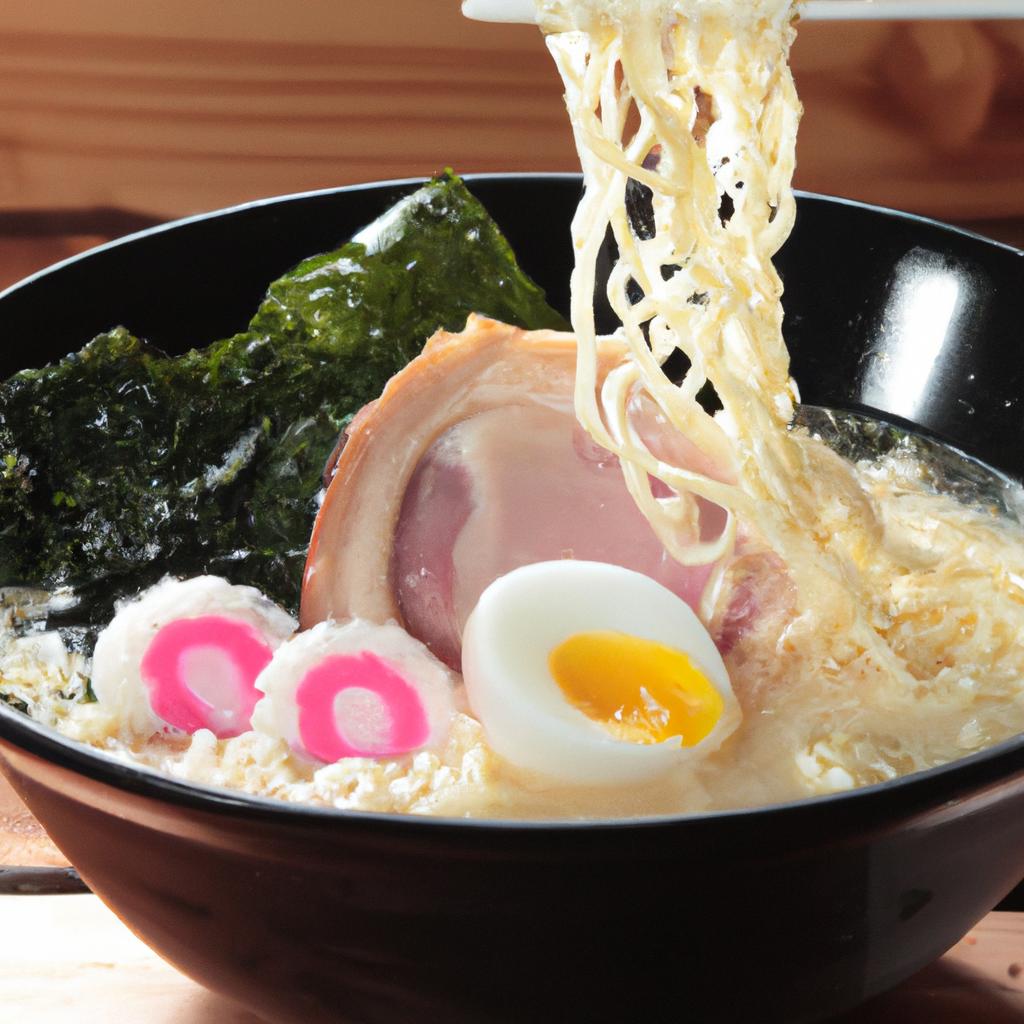Ramen noodles

Ramen is a Japanese dish that has gained immense popularity all over the world. It is a type of noodle soup that is made with a flavorful broth, accompanied by wheat noodles and various toppings such as meat, vegetables, and eggs. Ramen originated in China but was introduced to Japan during the early 20th century. Since then, it has been regarded as one of the most iconic and beloved dishes in Japanese cuisine.
In Japan, ramen can be found in almost every corner of the country. Each region has its own unique style, flavor, and specific toppings. This dish is often considered a comfort food, eaten by people of all ages, from students and salarymen to families and tourists. It is estimated that there are over 10,000 ramen shops in Tokyo alone, making it a significant part of the country’s food culture.
The basic components of a bowl of ramen consist of noodles, broth, and toppings. The noodles used in ramen are typically made from wheat flour, water, and kansui, an alkaline water that gives the noodles their characteristic texture and yellow color. The broth can be made from pork, chicken, or seafood and is simmered for hours, often with various ingredients and spices, to create a rich and flavorful base. Depending on the region, the broth can be thick and creamy or light and clear. The toppings may include sliced pork, bamboo shoots, dried seaweed, soy sauce eggs, and scallions.
Preparing ramen from scratch may seem intimidating at first, but it is a relatively simple process. Making the broth is the most time-consuming part of the recipe, but the result is well worth it. It can be made in advance, stored in the refrigerator, and reheated when ready to serve. The noodles can be purchased from Asian grocery stores or made at home with a pasta maker, and the toppings can be tailored to one’s preferences.
One of the most popular styles of ramen is Tonkotsu, which originated in the Hakata region of Japan. The Tonkotsu broth is made by simmering pork bones for several hours until they break down and release their collagen, creating a creamy and savory broth with a distinct umami flavor. It is typically served with thin, straight noodles and topped with sliced pork, soft boiled eggs, and scallions. Tonkotsu ramen has a creamy texture and a rich, meaty flavor that makes it a favorite among ramen lovers.
Another popular style of ramen is Shoyu, which has a clear, soy sauce-based broth. It is typically served with curly noodles and topped with sliced pork, dried seaweed, and scallions. Shoyu ramen has a lighter flavor profile than Tonkotsu but is equally delicious.
In recent years, vegan and vegetarian ramen options have become more widely available, using vegetable-based broths and protein alternatives such as tofu and seitan. This provides a healthier, more sustainable option for those who choose to avoid meat products.
In conclusion, ramen is a dish that has transcended borders and has become a worldwide phenomenon. It is beloved for its rich, flavorful broth, chewy noodles, and endless toppings options. With regional variations and styles to suit every taste, ramen is a versatile and comforting dish that can be enjoyed by anyone.
Ingredients:
- 4-5 packs of Ramen noodles
- 4-5 cups of chicken or vegetable broth
- 2-3 cloves of garlic, minced
- 1 tsp of grated fresh ginger
- 1 small onion, diced
- 2-3 tbsp of soy sauce
- 1 tbsp of hoisin sauce
- 1 tbsp of miso paste
- 2-3 boiled eggs, halved
- 2 cups of sliced mushrooms
- 1 cup of thinly sliced carrots
- 1 cup of thinly sliced scallions
- 1 cup of fresh bean sprouts
Instructions:
-
Boil the Ramen noodles according to package instructions. Drain and rinse in cold water. Set aside.
-
In a large pot, sauté the garlic, ginger, and onion until fragrant and softened.
-
Add the broth to the pot and bring to a simmer.
-
Stir in the soy sauce, hoisin sauce, and miso paste.
-
Add the mushrooms and carrots and cook until softened.
-
Divide the cooked noodles into bowls.
-
Ladle the hot broth over the noodles.
-
Add the halved boiled eggs to the soup.
-
Top each bowl with scallions and bean sprouts.
-
Serve hot and enjoy!